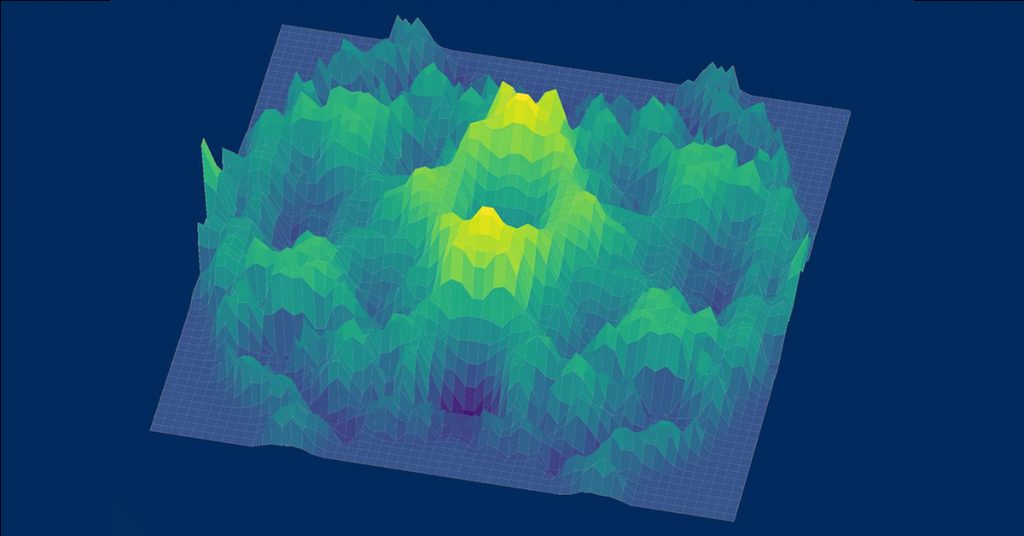For decades, scientists have harbored aspirations of achieving nuclear fusion, and now Microsoft believes the technology is on the verge of being connected to the power grid.
In a remarkable move, Microsoft has recently entered into an agreement to purchase electricity from a nuclear fusion generator. Nuclear fusion, often hailed as the ultimate goal of energy production, offers a potentially boundless supply of clean energy and has captivated scientists for nearly a century.
Helion Energy, a company that envisions making this ambitious dream a reality, aims to provide Microsoft with a functioning fusion generator by 2028. They announced a power purchase agreement with Microsoft, intending to connect the world’s first commercial fusion generator to a power grid in Washington. The objective is to generate a minimum of 50 megawatts of power, which may seem modest but is a notable achievement compared to the current capacity of the US’s initial two offshore wind farms, which produce a combined 42MW.
“It’s an extraordinarily ambitious endeavor,” remarks Robert Rosner, a theoretical physicist at the University of Chicago. “When it comes to such matters, I would never dismiss the possibility entirely. However, their success would be truly astonishing.”
Estimates from experts regarding the timeline for the emergence of the world’s first nuclear fusion power plant have varied, ranging from the end of the current decade to several decades into the future. Helion Energy’s success hinges on achieving remarkable breakthroughs within an unusually short timeframe and subsequently making their technology commercially viable and cost-competitive compared to other energy sources. However, Helion remains undeterred.
Helion’s founder and CEO, David Kirtley, emphasizes the significance of their commitment, stating, “This is a binding agreement that includes financial penalties if we fail to construct a fusion system. We have made a commitment to build and commercially sell a system to Microsoft.”
But how does a fusion system function? In simple terms, nuclear fusion imitates the process by which stars generate their own light and heat. Within our sun, hydrogen nuclei combine, forming helium and unleashing a tremendous amount of energy.
Scientists have been striving to replicate this controlled process since the 1950s (although they have achieved uncontrolled replication in the form of a hydrogen bomb). This approach stands in contrast to conventional nuclear power plants, which rely on fission, or the splitting apart of atoms, to release energy. A major drawback of fission is the creation of unstable nuclei that remain radioactive for millions of years. Fusion, on the other hand, circumvents the issue of radioactive waste as it primarily produces new helium atoms.
The most advanced endeavors to generate electricity through nuclear fusion involve using powerful laser beams to target a minuscule object or employing magnetic fields to contain superheated plasma within a device known as a tokamak.
Helion Energy has taken a different approach and is not utilizing either of the methods mentioned previously. Instead, the company is developing a 40-foot device known as a plasma accelerator, which is designed to heat fuel to an astonishing temperature of 100 million degrees Celsius. By heating deuterium (a hydrogen isotope) and helium-3 to form a plasma, Helion employs pulsed magnetic fields to compress the plasma until fusion occurs. For a more detailed illustration of the process, the company has shared a video on YouTube.
One notable claim by Helion is that their machine should eventually be capable of recapturing the electricity utilized to initiate the reaction, enabling the recharge of the device’s magnets. David Kirtley asserts, “We electrically recover all the energy we put into fusion so that we can actually build systems that are smaller and cheaper, and we can iterate on them much more rapidly.”
Anne White, a distinguished professor at the MIT School of Engineering, expresses excitement about the announcement, stating, “This is an exciting announcement, and many in the community will be eager to examine the technical details. Subsequent publications and results will provide further clarity on the approach and help us understand the timeline.”
Achieving energy efficiency is a critical aspect in realizing fusion power. After all, extreme heat and pressure are required to induce atom fusion. Until recently, researchers struggled to achieve this without consuming more energy than what the fusion reaction actually produced. However, in a significant breakthrough called “fusion ignition,” lasers accomplished this milestone in December. It marked the first time researchers were able to trigger a fusion reaction that resulted in a net energy gain. This achievement is yet to be attained by Helion and remains a significant milestone for the company.
According to Rosner, obtaining sufficient helium-3 fuel could pose another significant challenge, as there is currently no commercially viable method for producing it. Helium-3 is a highly rare isotope that finds applications in quantum computing and medical imaging. However, Helion claims to have patented a process within its plasma accelerator that enables the creation of helium-3 by fusing deuterium atoms together. The allure of nuclear fusion lies, in part, in its ability to operate using hydrogen, the most abundant and simplest element in the universe.
Assuming Helion successfully accomplishes these feats, they must still ensure that they can do so in an affordable manner. The cost of the electricity generated by their fusion technology would need to be competitive with or cheaper than that produced by existing power plants, solar energy, and wind farms. Although the specific price agreed upon in Helion’s power purchase agreement with Microsoft remains undisclosed, Kirtley states that the company aims to eventually bring costs down to as low as one cent per kilowatt-hour.
Helion counts OpenAI CEO Sam Altman among its backers. Microsoft has made a substantial investment in OpenAI to support the development of popular tools such as ChatGPT. Altman serves as Helion’s board chair and is its largest investor, as reported by The Washington Post. He may have played a role in facilitating the power purchase agreement between Helion and Microsoft. Over the past few years, Kirtley’s company has collaborated closely with Microsoft’s data center group to gain a deeper understanding of their energy requirements and to build Microsoft’s confidence in their technology.
Brad Smith, the vice chair and president of Microsoft, expressed in a press release that Helion’s announcement aligns with Microsoft’s long-term clean energy objectives and will accelerate the market’s progress in establishing a new and efficient approach to delivering more clean energy to the grid.
However, as has been the case for decades with dreams of nuclear fusion, we will have to wait and see how it all unfolds.









